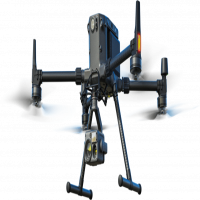Beyond the Buzz: Why Choosing the Right Drone is Essential for Cinematic Videography

Strong 8k brings an ultra-HD IPTV experience to your living room and your pocket.
In the burgeoning world of content creation, drones have transcended from mere toys to indispensable tools for videographers. They offer a unique perspective, transforming mundane scenes into breathtaking aerial spectacles. However, simply owning a drone isn’t enough to guarantee stunning footage. The true magic lies in choosing the right drone – one that aligns perfectly with your creative vision, technical needs, and specific videography goals.
Ignoring this crucial decision can lead to frustrating experiences, compromised footage, and ultimately, wasted investment. Here’s why selecting the appropriate drone for videography is paramount:
1. Unlocking True Cinematic Quality
Not all drones are created equal, especially when it comes to image capture. A cheap drone with a poor camera sensor will deliver grainy, washed-out footage, regardless of how expertly you fly it.
Resolution and Sensor Size: High-quality videography demands at least 4K resolution, but increasingly, 5.4K or even 8K options are becoming standard for professionals. More importantly, a larger sensor (e.g., 1-inch, Micro Four Thirds) will capture more light, produce better dynamic range, reduce noise in low light, and offer more flexibility for post-production color grading – all hallmarks of cinematic quality.
Frame Rates: The ability to shoot at various frame rates (24fps for filmic look, 30fps for standard video, 60fps, 120fps, or even higher for smooth slow-motion) is critical for creative storytelling.
Color Profiles: Professional drones often offer flat or LOG color profiles, which retain more dynamic range and color information, allowing videographers immense control during editing to achieve a specific look.
2. Ensuring Unwavering Stability and Smoothness
Shaky footage is the bane of any videographer’s existence. Drones are inherently susceptible to wind and movement, making robust stabilization critical.
Mechanical Gimbals: A high-quality 3-axis mechanical gimbal is non-negotiable. It physically isolates the camera from the drone’s movements, delivering butter-smooth, stable shots even in challenging conditions. Relying solely on digital image stabilization (EIS) will often result in a “jello” effect or cropped footage.
Wind Resistance: A heavier, more powerful drone with advanced flight algorithms will handle windy conditions much better than a lightweight, entry-level model, preventing jerky movements and ensuring consistent shot quality.
3. Maximizing Creative Freedom and Efficiency
The right drone doesn’t just capture video; it empowers your creative process.
Intelligent Flight Modes: Advanced drones come packed with intelligent flight modes (e.g., ActiveTrack, Point of Interest, Waypoints, Hyperlapse, MasterShots). These automated features allow you to execute complex, cinematic movements with ease, freeing you to focus on framing and exposure rather than constantly managing flight controls.
Battery Life & Range: Longer flight times (25-40 minutes) and extended transmission ranges mean more opportunities to capture the perfect shot without constant landings and battery swaps, improving efficiency on set, especially for remote locations.
Payload Capacity: For professional setups, the ability to carry heavier camera payloads (e.g., a specific mirrorless camera) or accessories like ND filters and external monitors is crucial.
4. Prioritizing Safety and Reliability
A drone flying through the air is an expensive piece of equipment, and potentially a hazard if not handled properly.
Obstacle Avoidance: Multi-directional obstacle sensing prevents collisions, protecting your investment and reducing the risk of accidents that could damage property or injure people.
GPS Accuracy & Return-to-Home (RTH): Precise GPS positioning ensures stable hovering and accurate flight paths. Reliable RTH features are a lifesaver if the battery gets low, or signal is lost.
Build Quality: A well-built drone can withstand minor bumps and provide long-term reliability for demanding videography projects.
5. Tailoring to Your Workflow and Expertise
“Right” is subjective. What’s perfect for a Hollywood production might be overkill for a real estate videographer, and vice-versa.
Skill Level: Beginners might benefit from user-friendly drones with simplified controls and robust safety features before graduating to more complex systems.
Specific Niche: Real estate often requires wide, sweeping shots; travel vlogging needs portability; narrative filmmaking demands interchangeable lenses and advanced color science. Choosing a drone designed for your primary niche will streamline your workflow.
Budget: While it’s tempting to go for the cheapest option, investing in a drone that meets your quality standards will save you money in the long run by producing marketable results and avoiding costly upgrades.
Conclusion: Invest in Your Vision
Choosing the best drone for videography is not merely a purchase; it’s an investment in your creative potential and the quality of your output. It dictates whether your aerial footage will be a forgettable addition or a standout element that captivates your audience.
By carefully considering camera quality, stabilization, flight performance, intelligent features, safety, and your specific needs, you can select a drone that truly elevates your videography from good to genuinely cinematic. Do your research, understand your requirements, and choose wisely – the sky’s the limit for what you can achieve.
Note: IndiBlogHub features both user-submitted and editorial content. We do not verify third-party contributions. Read our Disclaimer and Privacy Policyfor details.


